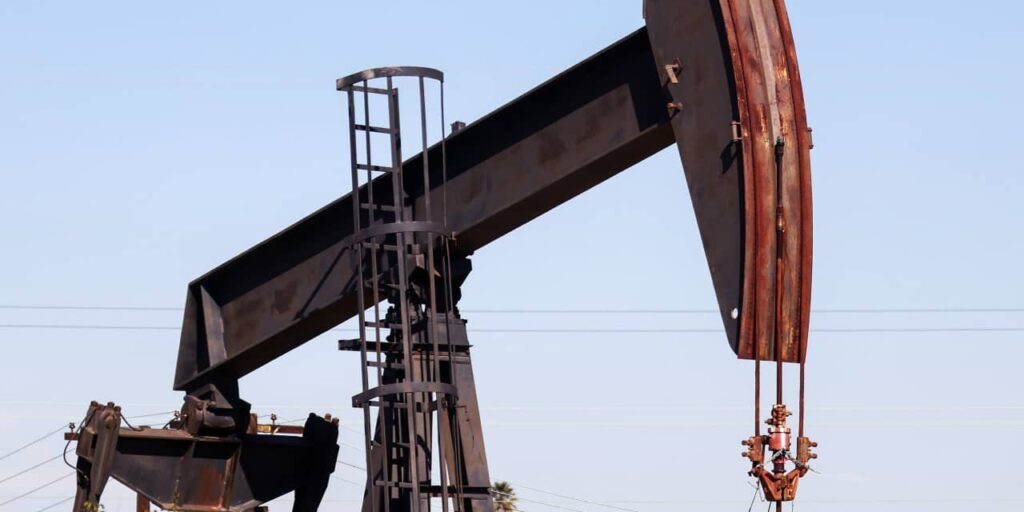Oil futures on Tuesday headed higher following declines in each of the last three trading sessions that were attributed in part to skepticism over the ability of OPEC+ to deliver on additional production cuts early next year.
Price action
-
West Texas Intermediate crude for January delivery
CL00,
+1.16%CL.1,
+1.16%CLF24,
+1.16%
was up 78 cents, or 1.1%, at $73.82 a barrel on the New York Mercantile Exchange after settling Monday at its lowest since mid-November. -
February Brent crude
BRN00,
+0.99%BRNG24,
+0.99%,
the global benchmark, added 90 cents, or 1.2%, at $78.93 a barrel on ICE Futures Europe. -
January gasoline
RBF24,
+0.77%
tacked on 1% to $2.156 a gallon, while January heating oil
HOF24,
+1.08%
rose 1.3% to $2.6931 a gallon. -
Natural gas for January delivery
NGF24,
+2.71%
traded at $2.775 per million British thermal units, up 3%.
Market drivers
OPEC+ officials have reminded the oil market that they may extend their production cuts or even deepen them, and the U.S. Biden administration has indicated that it will buy back as much oil as it can to replenish the Strategic Petroleum Reserve, Alex Kuptsikevich, senior market analyst at FxPro, said in market commentary on Tuesday.
Prince Abdulaziz bin Salman, Saudi Arabia’s energy minister, said this week that OPEC+ production cuts can “absolutely” continue past the first quarter if needed, Bloomberg reported on Monday.
Also read: Why solar energy will continue to lead the pack among renewable energy sources in 2024
Meanwhile, David Turk, U.S. deputy energy secretary told Bloomberg TV Monday that the U.S. is refilling the SPR as much as it can, it has been for the last several months and at current prices it’ll keep doing that.
Crude prices ended last week with back-to-back losses after OPEC+ producers on Thursday agreed to voluntarily cut around 2.2 million barrels a day (mbd) of crude from the market in the first quarter of next year, a figure that included a widely expected extension of Saudi Arabia’s 1 mbd voluntary output cut and Russia’s 300,000 barrel a day cut to crude exports.
The voluntary nature of the overall cuts left traders skeptical over whether producers will comply, analysts said. Remarks by Saudi Arabia’s energy minister on Monday signaling that the first-quarter cuts could be extended offered little lasting support.
Also see: Why the rally in uranium that lifted prices to a 15-year high may not be over
“Looking ahead, the price action in oil has become increasingly heavy, and if there is not some sort of positive or bullish market catalyst ahead, we are likely to see a test of the 2023 lows in the $67/barrel area” for WTI, analysts at Sevens Report Research wrote in a Tuesday note.
Weekly data from the Energy Information Administration on U.S. petroleum supplies will be released Wednesday.
On average, analysts polled by S&P Global Commodity Insights expect the report, covering the week ended Dec. 1, to show a decline of 4.1 million barrels in domestic commercial crude stockpiles. They also forecast weekly supply increases of 800,000 barrels each for gasoline and distillate supplies.
Read the full article here

